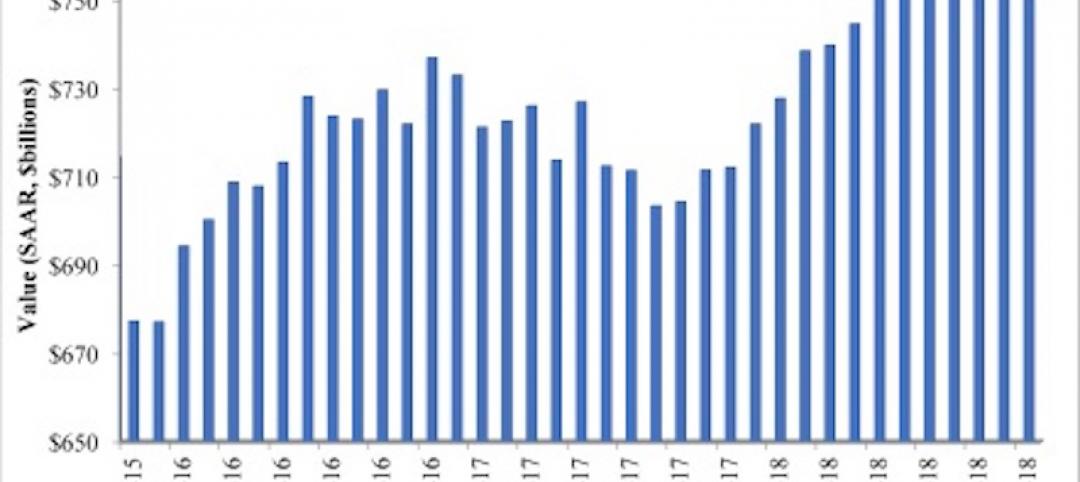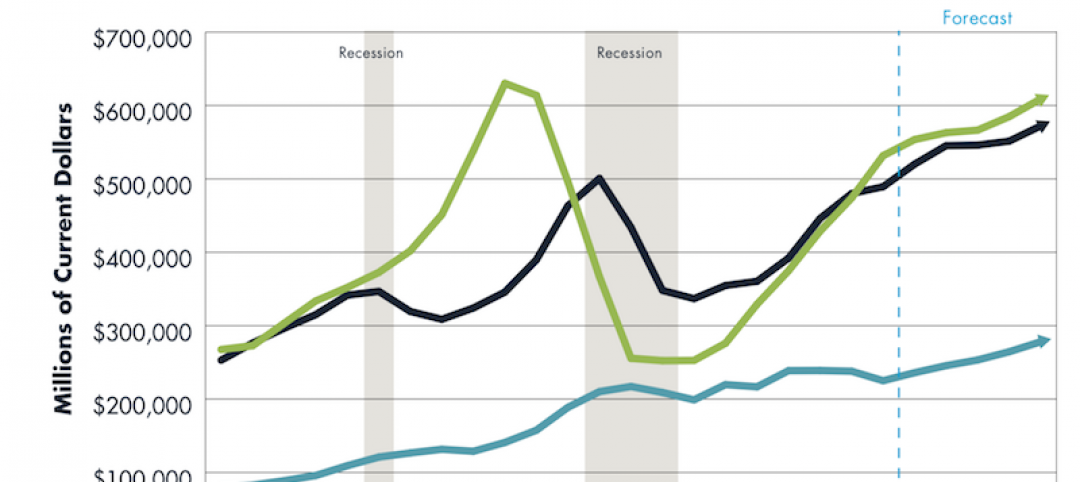Demand for different types of construction continued to diverge in June as residential construction increased for the month and the year while nonresidential construction spending fell again, according to a new analysis of federal construction spending data the Associated General Contractors of America released today. Officials noted the nonresidential declines include a steep drop in spending on highway and street projects and urged Congress to quickly pass a new, bipartisan infrastructure measure.
“The pandemic has created a tale of two construction industries, a residential market where demand continues to surge and a nonresidential market that is struggling to gain traction,” said Stephen E. Sandherr, the association’s chief executive officer. “The federal government has a real opportunity to boost nonresidential construction by passing the bipartisan infrastructure measure as quickly as possible.”
Construction spending in June totaled $1.55 trillion at a seasonally adjusted annual rate, an increase of 0.1% from May, and 8.2% higher than the pandemic-depressed rate in June 2020. Once again, residential construction saw monthly and year-over-year gains while non-residential construction spending lagged. The residential construction segment climbed 1.1% for the month and 28.8% year-over-year. The nonresidential construction segment fell by 0.9% compared to May and 6.6% compared to June 2020.
Private nonresidential construction spending fell 0.7% from May to June and 6.0% since June 2020, with year-over-year decreases in all 11 subsegments. The largest private nonresidential category, power construction, fell 1.9% year-over-year and 1.2% from May to June. Among the other large private nonresidential project types, commercial construction—comprising retail, warehouse and farm structures—retreated 2.1% year-over-year and 0.2% for the month. Manufacturing construction fell 0.7% from a year earlier and 1.1% from May. Office construction decreased 9.1% year-over-year and by 0.1% compared to May.
Public construction spending plunged 7.5% year-over-year and 1.2% for the month. Among the largest segments, highway and street construction declined 7.6% from a year earlier and 5.3% compared to May 2021. Public educational construction decreased 9.1% year-over-year and 0.8% in June. Spending on transportation facilities fell 5.7% over 12 months but was up 1.1% in June.
Association officials said the new bipartisan infrastructure measure would invest more than $1.2 trillion to build the nation’s roads, bridges, transit systems, airports, ports, and waterways, drinking water and wastewater systems, energy infrastructure and more. They added that Congress should pass the measure as quickly as possible to have the broadest impact on creating new construction career opportunities.
“It would be a shame if certain members of Congress were to hold new infrastructure investments, and the job opportunities they create, hostage to impose unrelated partisan measures that would undermine the economic recovery,” Sandherr said.
Related Stories
Market Data | Feb 14, 2019
U.S. Green Building Council announces top 10 countries and regions for LEED green building
The list ranks countries and regions in terms of cumulative LEED-certified gross square meters as of December 31, 2018.
Market Data | Feb 13, 2019
Increasingly tech-enabled construction industry powers forward despite volatility
Construction industry momentum to carry through first half of 2019.
Market Data | Feb 4, 2019
U.S. Green Building Council announces annual Top 10 States for LEED Green Building in 2018
Illinois takes the top spot as USGBC defines the next generation of green building with LEED v4.1.
Market Data | Feb 4, 2019
Nonresidential construction spending dips in November
Total nonresidential spending stood at $751.5 billion on a seasonally adjusted annualized rate.
Market Data | Feb 1, 2019
The year-end U.S. hotel construction pipeline continues steady growth trend
Project counts in the early planning stage continue to rise reaching an all-time high of 1,723 projects/199,326 rooms.
Market Data | Feb 1, 2019
Construction spending is projected to increase by more than 11% through 2022
FMI’s annual outlook also expects the industry’s frantic M&A activity to be leavened by caution going forward.
Market Data | Jan 23, 2019
Architecture billings slow, but close 2018 with growing demand
AIA’s Architecture Billings Index (ABI) score for December was 50.4 compared to 54.7 in November.
Market Data | Jan 16, 2019
AIA 2019 Consensus Forecast: Nonresidential construction spending to rise 4.4%
The education, public safety, and office sectors will lead the growth areas this year, but AIA's Kermit Baker offers a cautious outlook for 2020.
Market Data | Dec 19, 2018
Brokers look forward to a commercial real estate market that mirrors 2018’s solid results
Respondents to a recent Transwestern poll expect flat to modest growth for rents and investment in offices, MOBs, and industrial buildings.
Market Data | Dec 19, 2018
When it comes to economic clout, New York will far outpace other U.S. metros for decades to come
But San Jose, Calif., is expected to have the best annual growth rate through 2035, according to Oxford Economics’ latest Global Cities report.

















